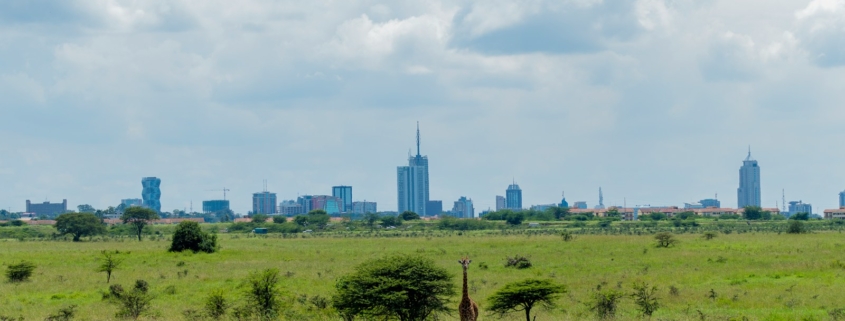Nairobi National Park: Your Ultimate Wildlife Safari Just Outside the City
Imagine this: Just a short 7-kilometer drive south of Nairobi’s bustling streets, the urban jungle gives way to a wild expanse of tawny grasslands. This is Nairobi National Park, a unique sanctuary where the thrill of the wilderness unfolds mere minutes from the city’s skyscrapers.
Picture acacia trees dotting the golden plains, their gnarled branches casting dappled shade on the sun-baked earth. In the distance, the majestic silhouette of Nairobi’s skyline rises against the azure sky, a stark contrast to the untamed beauty of the savanna.
This is a land teeming with life. The endangered black rhino, a prehistoric tank grazing on the acacia pods, is a symbol of resilience. Powerful lions laze in the golden grass, their amber eyes scanning the horizon for prey. Leopards, sleek and stealthy hunters, stalk through the shadows, while cheetahs, the fastest land animals on Earth, blur across the plains in a whirlwind of spots and dust.
But the drama doesn’t end with the big cats. Hyenas cackle their mischievous laughter, while buffaloes graze in thunderous herds, their horns glinting in the sun. Giraffes, the gentle giants of the savanna, stretch their long necks to nibble on acacia leaves, their patterned coats like living mosaics against the golden backdrop.
And the sky is alive with a symphony of wings. Over 400 species of birds call Nairobi National Park home, from the iridescent flash of a lilac-breasted roller to the piercing cry of a bateleur eagle.
Nairobi National Park is more than just a wildlife spectacle, though. It’s a place where visitors can reconnect with nature. Pack a picnic basket and find a shady acacia tree to spread your blanket, or embark on a thrilling safari in a 4×4, the wind whipping through your hair as you search for lions basking in the golden light. For the adventurous, there are three campsites where you can spend the night under a canopy of stars, lulled to sleep by the sounds of the wild.
What is the best time to visit Nairobi National Park for optimal wildlife viewing?
The best time to visit Nairobi National Park for optimal wildlife viewing is during the dry season, which typically spans from June to September. During this period, vegetation is sparse, making it easier to spot wildlife. However, wildlife viewing is rewarding throughout the year.
Are guided safari tours available, and how can visitors book them in advance?
Yes, guided safari tours are available at Nairobi National Park. Visitors can book these tours through the park’s official website, contacting accredited tour operators, or arranging tours on-site at the park’s entrance. It is recommended to book in advance to secure preferred time slots and ensure availability.
What safety measures are in place to ensure a secure experience for visitors in Nairobi National Park?
Nairobi National Park prioritizes the safety of its visitors. Trained park rangers and security personnel are stationed throughout the park. Visitors are advised to follow all safety guidelines provided during guided tours, including staying within designated areas and maintaining a safe distance from wildlife.
Are there restrictions on photography, and are drones allowed for capturing the wildlife and landscape?
Photography is allowed in Nairobi National Park, and visitors are encouraged to capture the stunning landscapes and wildlife. However, there are guidelines to ensure the well-being of the animals. The use of drones is strictly prohibited within the park to prevent disturbance to the wildlife.
What are the chances of spotting the “Big Five”
Nairobi National Park is renowned for offering excellent chances of spotting the “Big Five” – lion, leopard, buffalo, elephant, and rhinoceros. While sightings are never guaranteed due to the wild nature of the park, visitors have high success rates, particularly during early morning and late afternoon game drives when animals are more active. Engaging in guided tours with experienced rangers increases the likelihood of encountering these iconic species.



